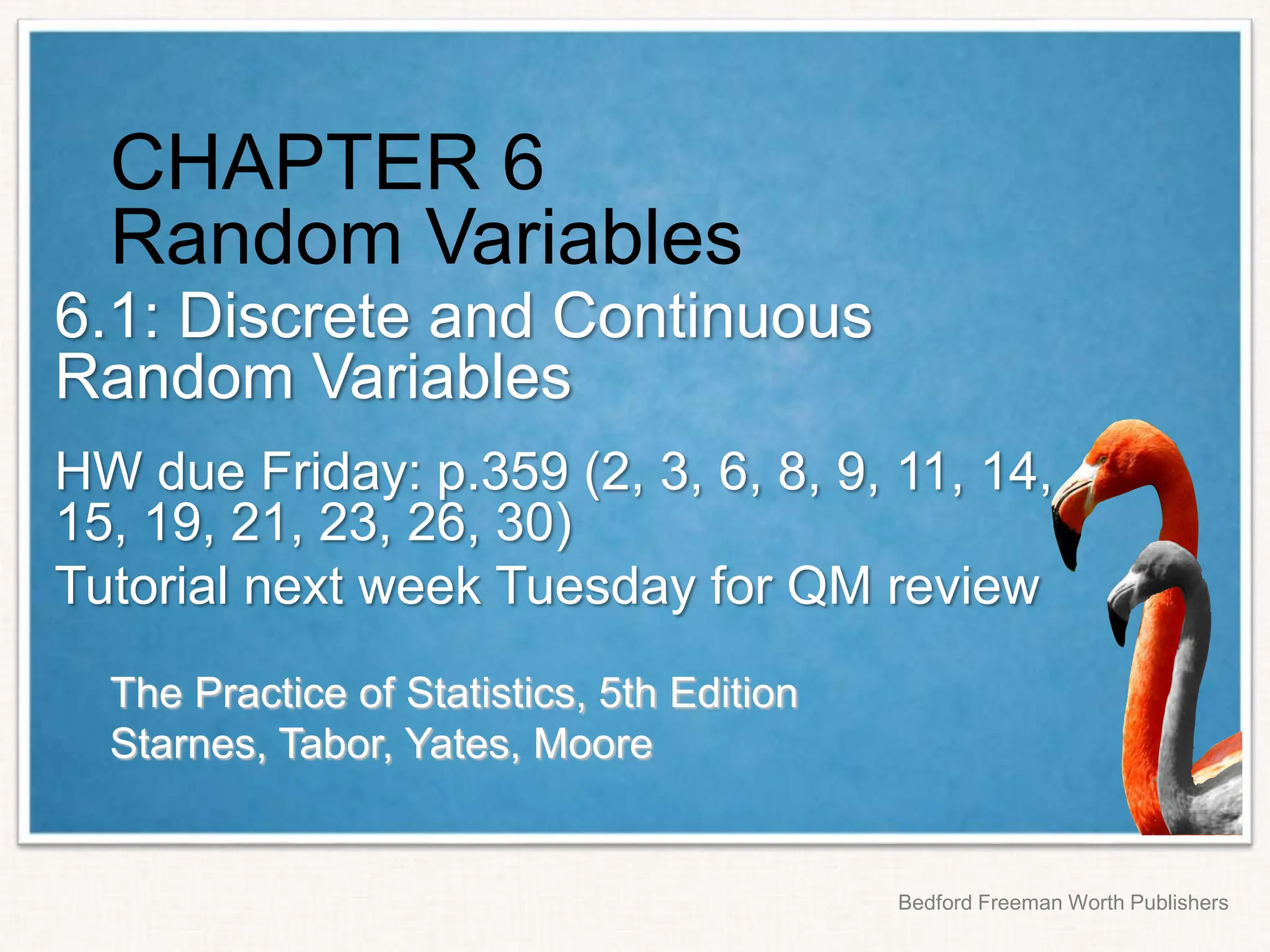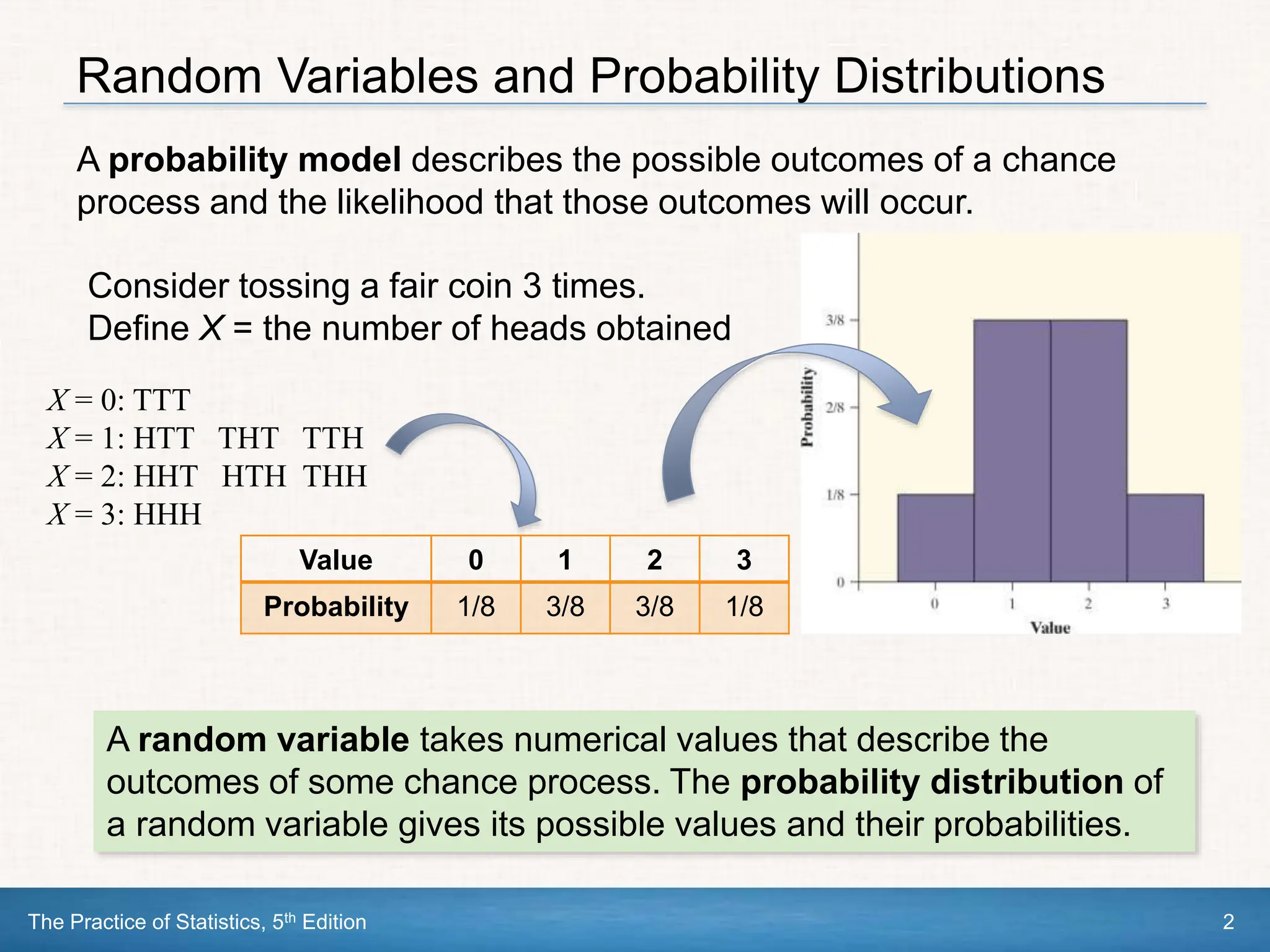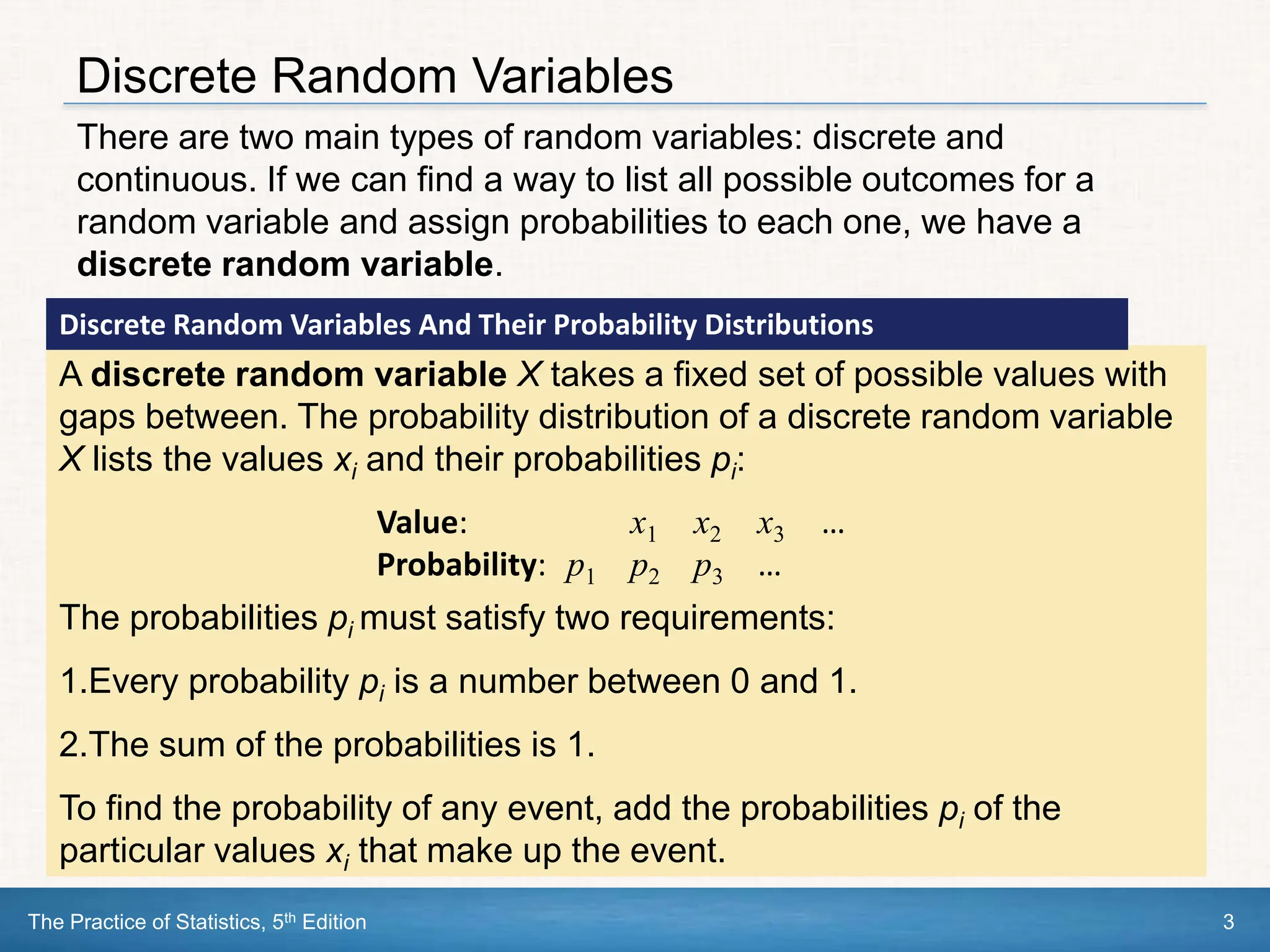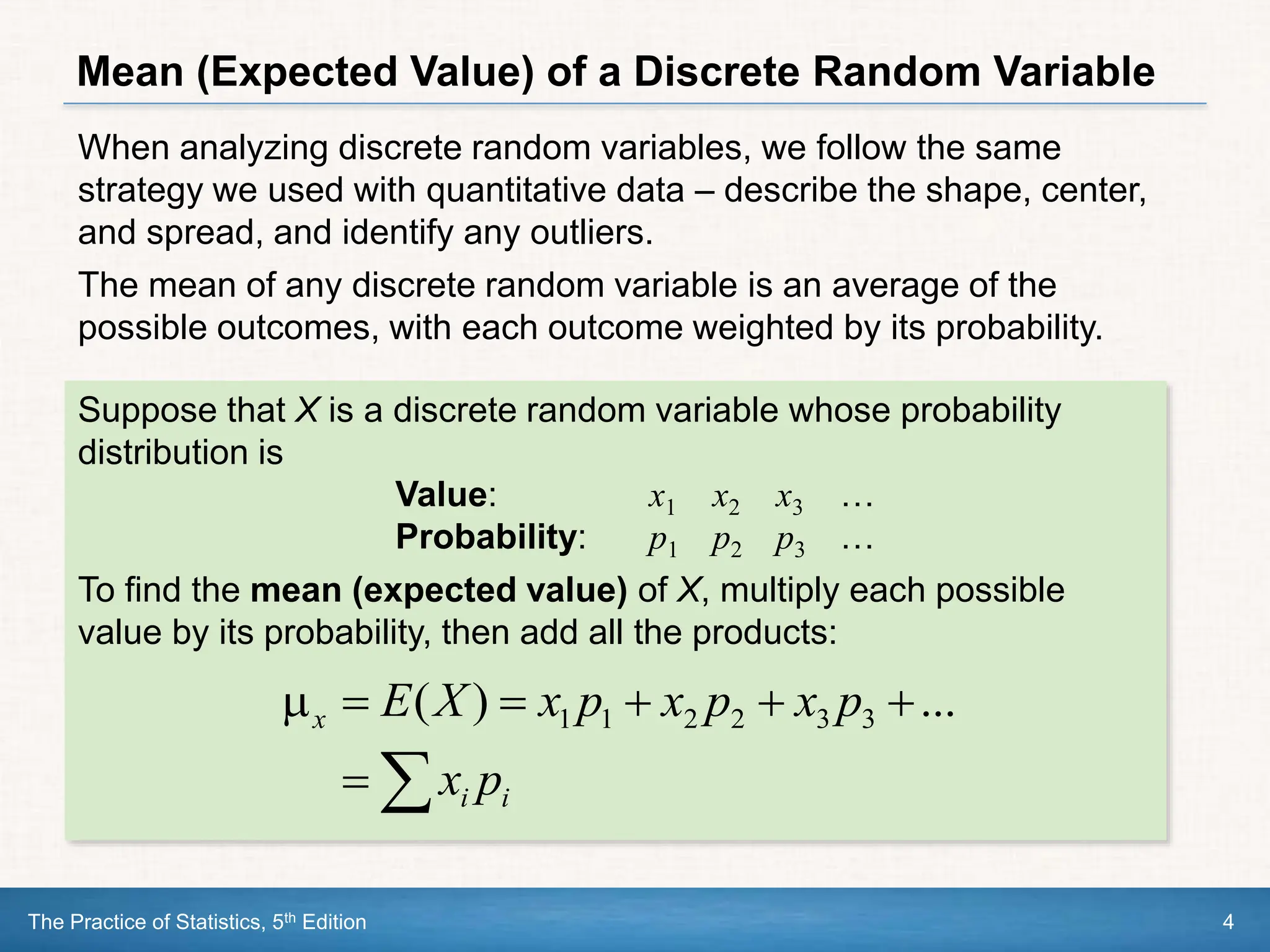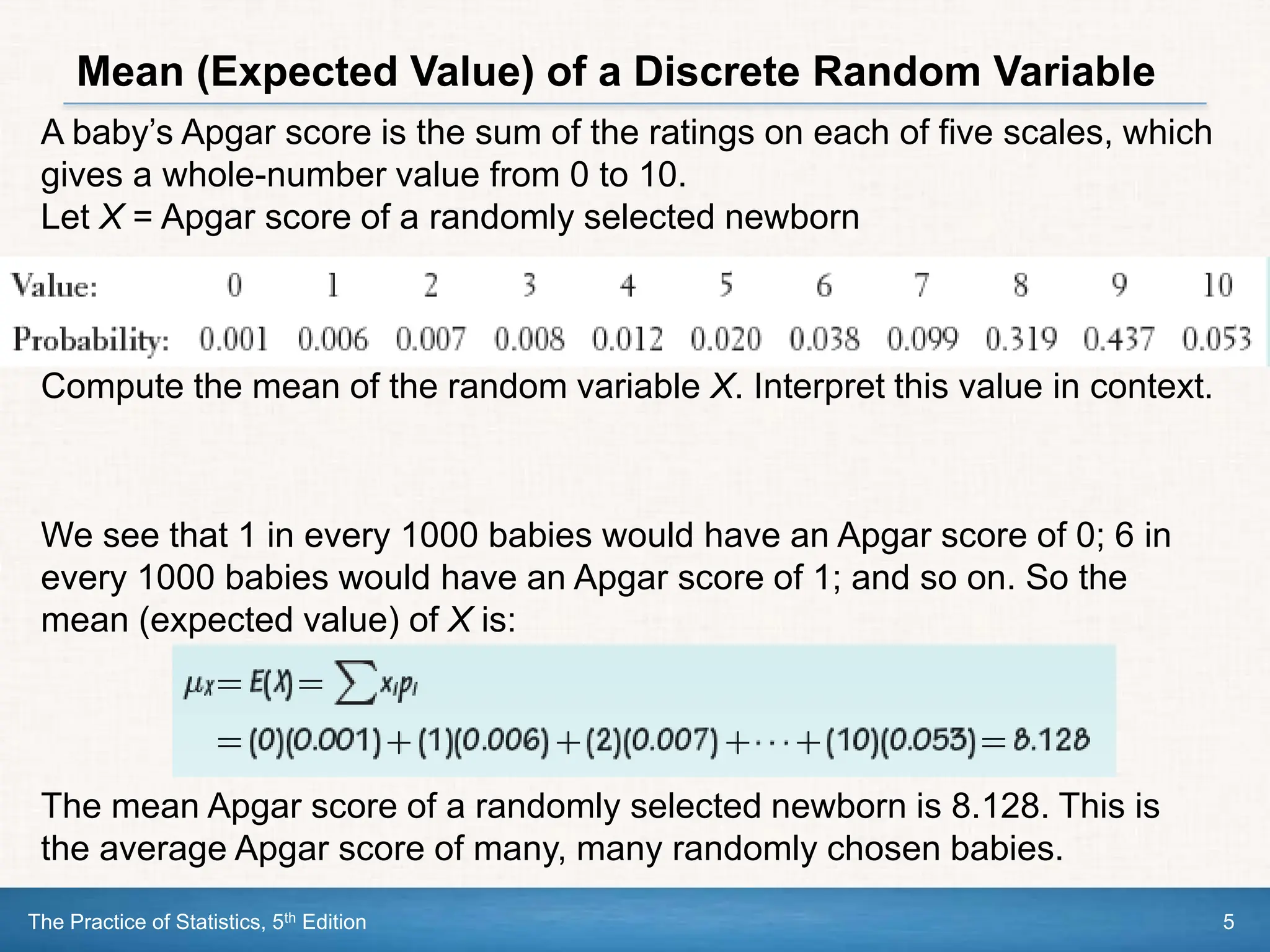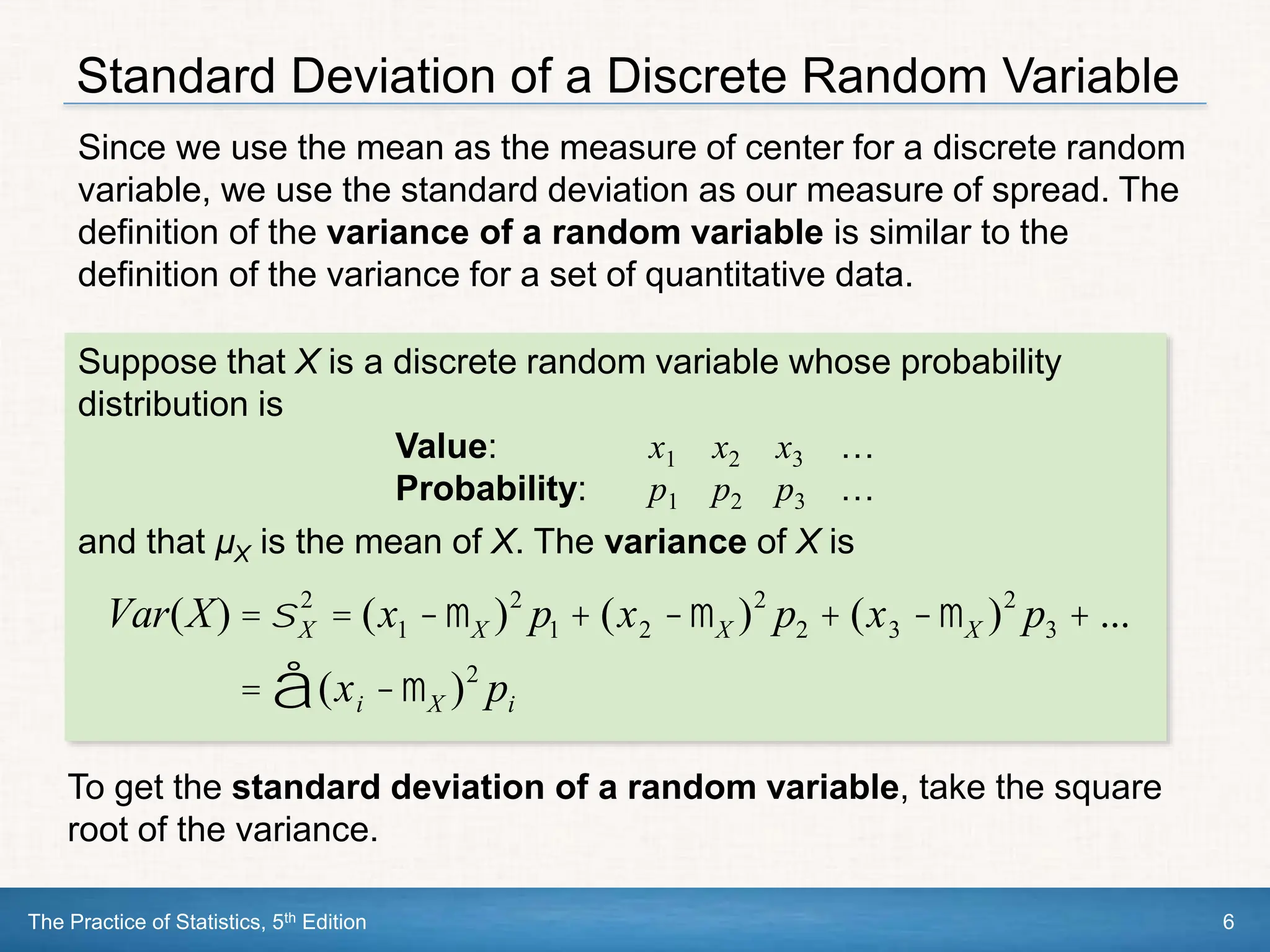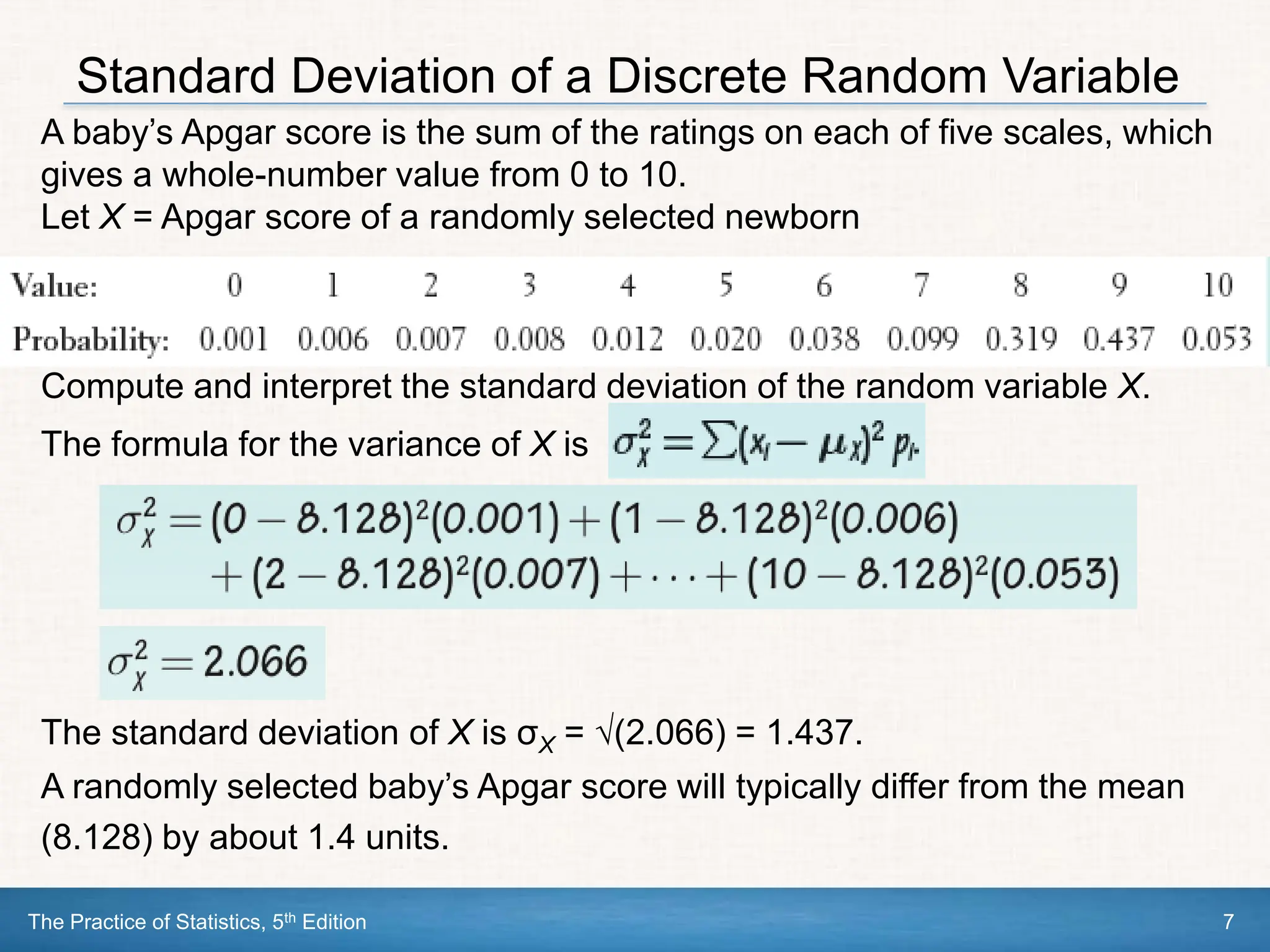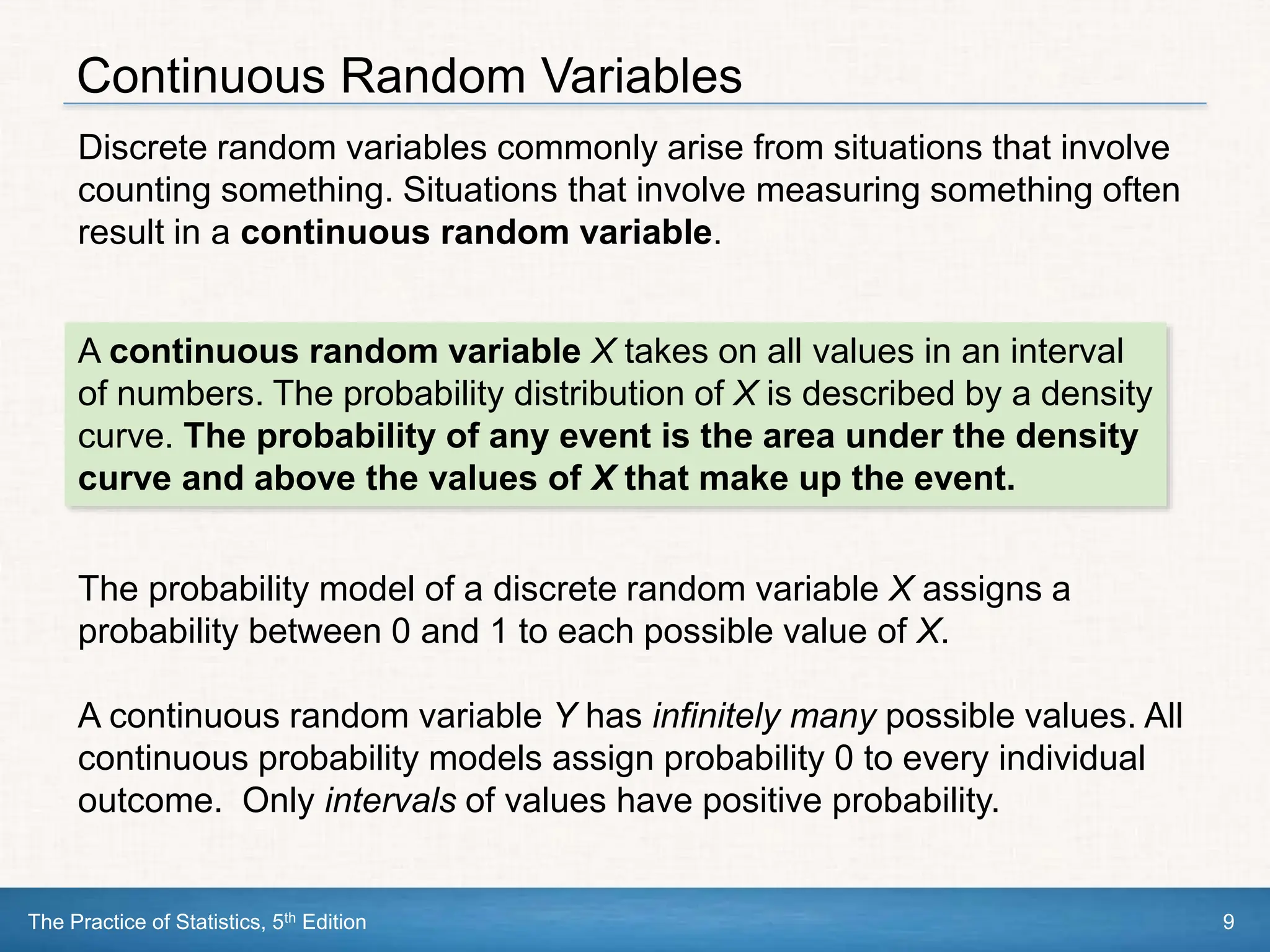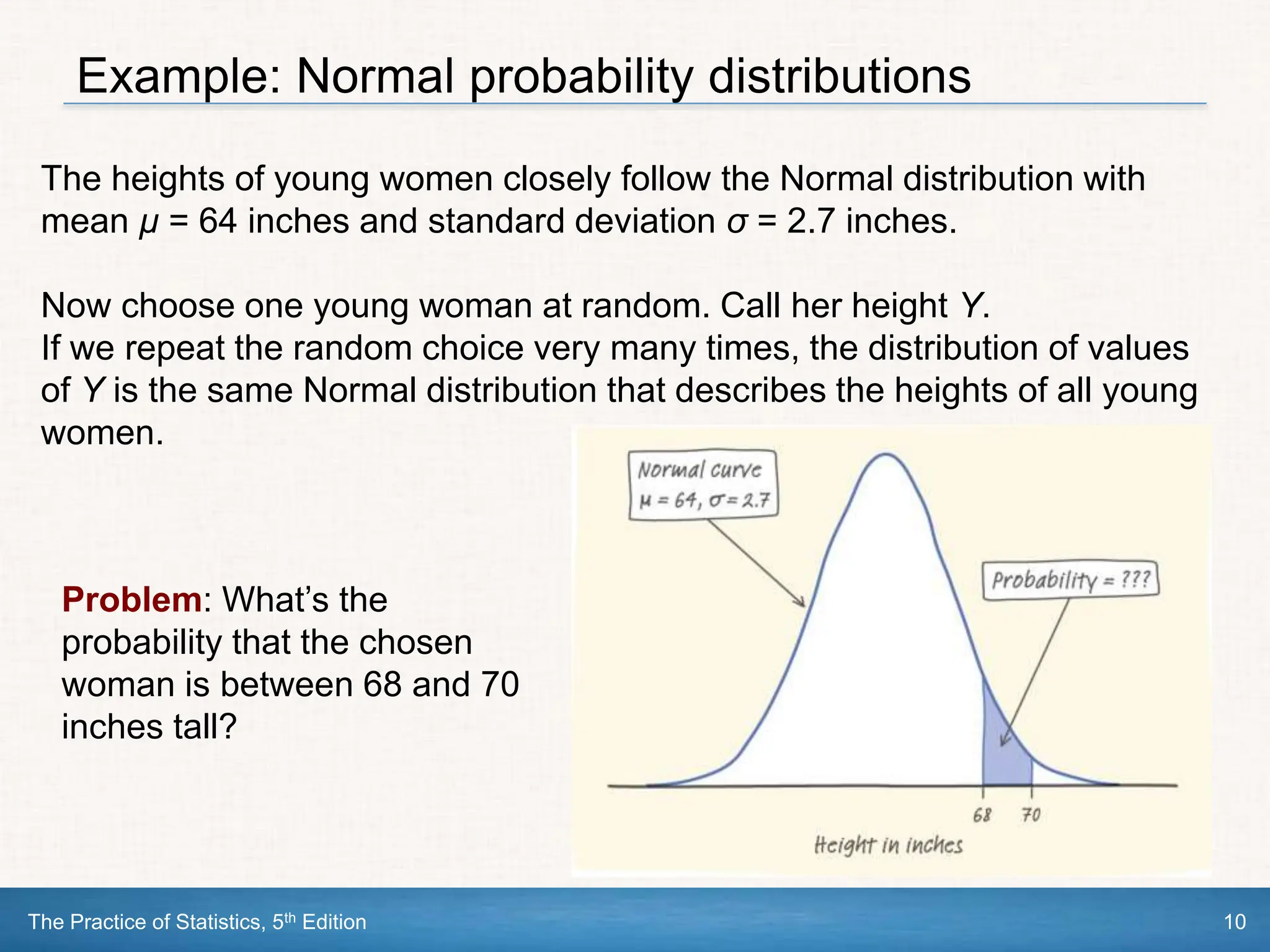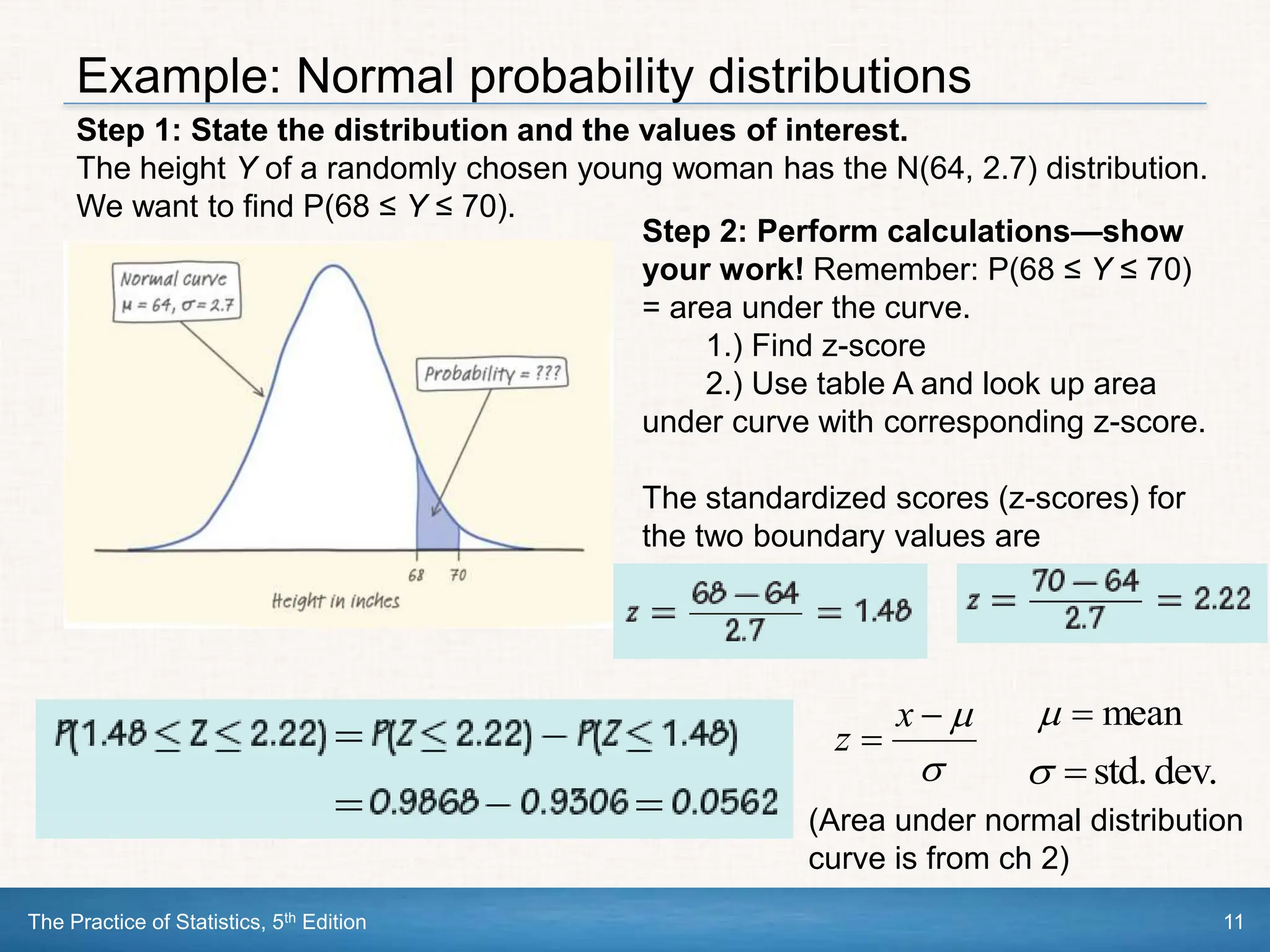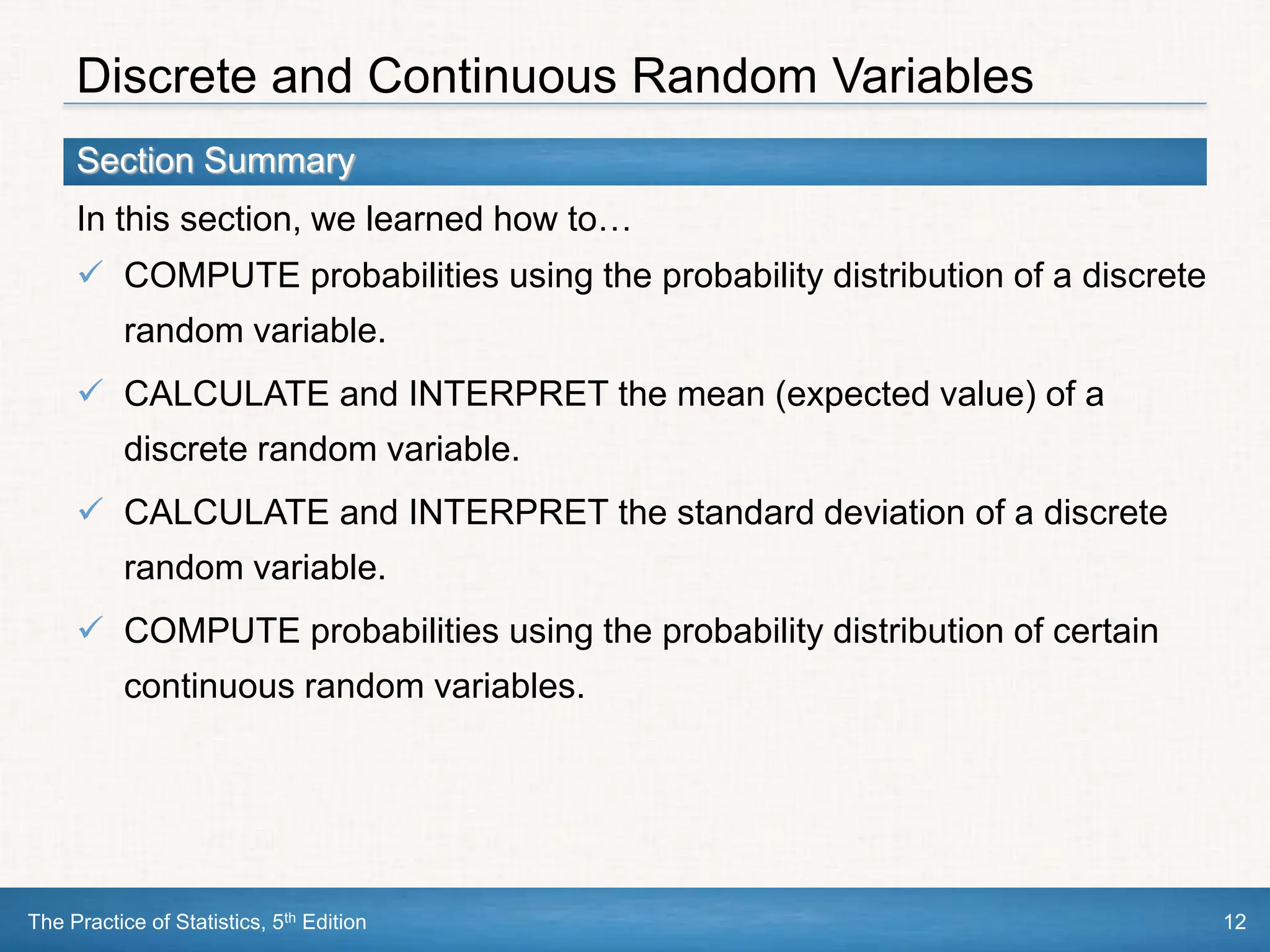The document summarizes key concepts about discrete and continuous random variables from Chapter 6 of The Practice of Statistics textbook. It defines discrete and continuous random variables and their probability distributions. It also explains how to calculate the mean, standard deviation, and probabilities of events for both discrete and continuous random variables. For example, it shows how to find the probability that a randomly chosen woman is between 68 and 70 inches tall using the normal distribution.
